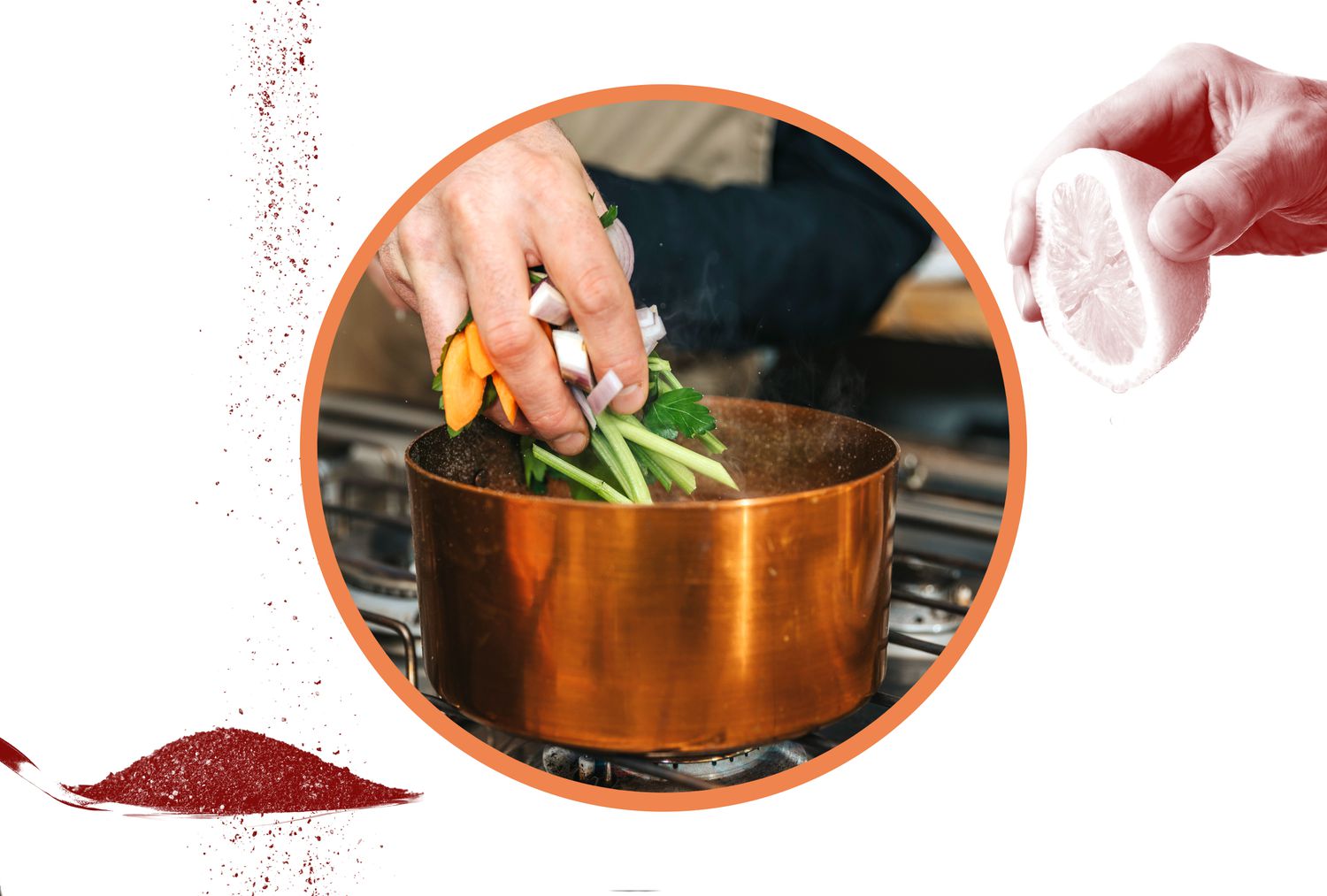
Perhaps you’ve made a resolution to change the way you eat this year — whether that means getting more antioxidant-rich ingredients into your diet or simply cooking more often at home. No matter the goal, flavor is just as important as nutrition for those who love cooking and eating good food. Luckily there are easy ways to boost the nutritional profile of your meals without sacrificing deliciousness. Here, a few pro chefs share their tried and true tips for maximizing flavor.
Focus on cooking techniques
“Braising and roasting vegetables brings out their natural sweetness and depth,” says Philip DeMaiolo, a Sodexo executive chef who has spent the past four years creating a more plant-based and diverse menu for NYC Health & Hospitals.
“If I’m making a carrot soup, I’ll juice the carrot for the soup base, then top it with a charred carrot as a garnish,” he says. “Braising celery hearts infuses [them] with flavor as they soak up whatever herbs and spices you have in the braising liquid. Serve them with a vinaigrette instead of a butter sauce and you have a classic dish that’s light yet satisfying.”
Chef Matt Jennings suggests using cooking methods that rely on less oil, butter, or other cooking fats. “Sautéeing requires more fat, but utilizing your broiler, grill, slow cooker, or circulator allows you to focus on using your fat where you need it,” he says. Instead of using a high amount of oil to cook the food, Jennings uses fat as a finishing touch. For example, this Broiled Eggplant with Tahini Sauce and Pomegranate Seeds is drizzled with a little tahini for a touch of richness and flavor.
Boost flavor with herbs, spices, and acid
You probably already know that herbs and spices can elevate your cooking, but Jennings says you can take things to the next level by using foods that are packed with acidity and umami, such as capers, sauerkraut, and fish sauce. He also toasts spices before using them to activate their essential oils, and adds citrus rinds and fresh herbs in layers to boost flavor.
DeMaiolo recommends replacing heavy sauces and dressings with fresh herbs, spices, citrus, and vinegar for vibrant flavor. “A squeeze of lemon or lime can do wonders for a dish,” he says.
Food & Wine / Photo by Jen Causey / Food Styling by Rishon Hanners / Prop Styling by Phoebe Hauser
Add vegetables to everything
Adding vegetables and legumes like beans or lentils to soups, stews, and even baked goods like zucchini bread is a simple way to boost fiber and add healthy nutrients, like vitamins A and C. What’s more, DeMaiolo says that you can easily incorporate more vegetables into dishes from global cuisines while being respectful of traditional recipes.
“We know that chickpeas make classic hummus, but other legumes work too,” he says. “I’ve used pigeon peas and cooked them with a sofrito before blending into a hummus-like texture to introduce more fiber and nutrients into the diet.”
Other easy ways to add more veggies to your diet: swap half your grains for vegetables, such as cauliflower rice, or add more cooked greens to traditionally carbohydrate-heavy dishes like lasagna and fried rice.
Make smart ingredient swaps
Abbie Gellman, a chef and dietitian who is the director of culinary medicine and teaching kitchen for St. Barnabas Hospital in New York City, suggests swapping cream for yogurt, or puréeing silken tofu or white beans into soups, which adds plant-based protein and fiber.
Gellman also looks at the balance of animal protein in a dish. “For example, a beef stew or chili could use less beef, more vegetables, and incorporate beans or lentils to bulk it up,” she says. “Mushrooms are another popular addition to ground meat recipes, since they have umami and a similar meaty texture. I often will grate vegetables such as onion and zucchini into ground meat dishes like burgers, meatballs, and meatloaf. This extends the amount of portions in the recipe and adds flavor, nutrients, and moisture.”
Rethink how you treat meat
Jennings says he marinates any protein to bump up the flavor. “Giving proteins time in a properly built marinade allows them to absorb critical flavors,” he says. “Rinse them or pat them dry before you cook them and you’ll breathe a sigh of relief knowing your food will have flavor.” He also suggests using a cooking spray (he prefers olive oil cooking spray) to “ensure you only use what you need and aren’t left with overly fatty food.”
“For items that may be breaded and pan-fried, such as chicken cutlets, I often replace standard breadcrumbs with a nut-based flour, such as almond flour, which typically absorbs less oil into the final dish yet still creates a nice, crispy finish,” adds Gellman. Better yet, almond flour provides some extra protein and nutrients.
The takeaway? Any dish can taste good, and be nutritious.
